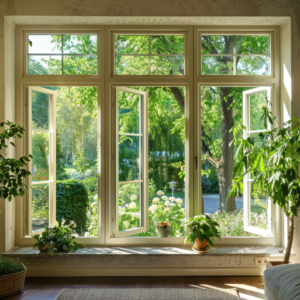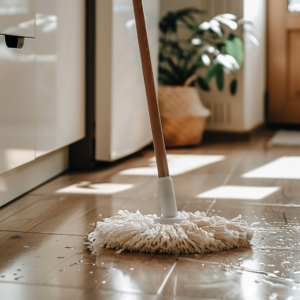
Essential Highlights
In today’s urbanized living conditions, maintaining high indoor air quality has become essential for health and well-being. Poor air quality within homes can lead to a variety of health issues, including allergies, respiratory problems, and even long-term diseases. Fortunately, there are several strategies you can employ to enhance the air quality of your home, making it a healthier environment for you and your loved ones.
Indoor air quality refers to the cleanliness and healthfulness of the air inside your living spaces. Various pollutants, such as dust, pollen, mold spores, and volatile organic compounds (VOCs), can degrade indoor air quality. Ensuring good air quality involves controlling these contaminants and maintaining proper humidity levels.
Improve Natural Ventilation: Open windows regularly to allow fresh air to circulate throughout your home. This simple step can significantly reduce the concentration of indoor air pollutants.
Use Exhaust Fans: Install and use exhaust fans in areas prone to moisture and odors, such as bathrooms and kitchens, to help remove pollutants directly from your home.
Consider an Energy Recovery Ventilation System: For homes in climates where opening windows year-round isn’t practical, an energy recovery ventilator (ERV) can help. ERVs exchange the indoor air with fresh outdoor air, without losing heating or cooling energy.

Indoor Plants: Certain plants have natural air-purifying qualities. Spider plants, snake plants, and peace lilies can absorb pollutants like formaldehyde and benzene. Placing a few of these plants around your home can aid in naturally purifying the air.
Air Purifiers: Using air purifiers in key areas of your home can help reduce the concentration of airborne pollutants, including allergens, tobacco smoke, and particulate matter. High-quality HEPA air purifiers can capture a significant amount of airborne particles, including allergens and dust. Place air purifiers in high-traffic areas and bedrooms to ensure cleaner breathing air.

Regular Cleaning: A clean home contributes significantly to improved IAQ. Regular vacuuming with a HEPA-filter vacuum cleaner, dusting surfaces, and washing bedding and rugs can significantly reduce the presence of dust mites and pet dander. Harvard Health emphasizes that good indoor hygiene can greatly cut down on dust and animal dander, contributing to healthier indoor air.
Maintain Your HVAC System: Replace filters regularly, and consider having your ductwork professionally cleaned to ensure efficient operation and minimize circulated dust.
Control Humidity: Maintaining a healthy level of humidity indoors can also improve your air quality. High humidity levels can encourage the growth of mold, dust mites, and other allergens. Use dehumidifiers in damp areas of your home to prevent mold growth. Ideally, keep indoor humidity levels between 30-50%.
Avoid Synthetic Fragrances: Many air fresheners and scented candles release VOCs into the air. Opt for natural alternatives or use essential oils for fragrance.
Use of Low-VOC Products: Volatile organic compounds found in paints, cleaning supplies, and building materials can deteriorate indoor air quality. Opt for products labeled “low-VOC” or “no-VOC” when available. This not only improves the air quality but also reduces exposure to potentially harmful chemicals.
Improving indoor air quality is a critical component of creating a healthier home. By implementing these strategies, you can reduce pollutants and allergens, enhancing the overall wellness of your household. Remember, taking proactive steps towards better air quality is an investment in your health and your home’s comfort.